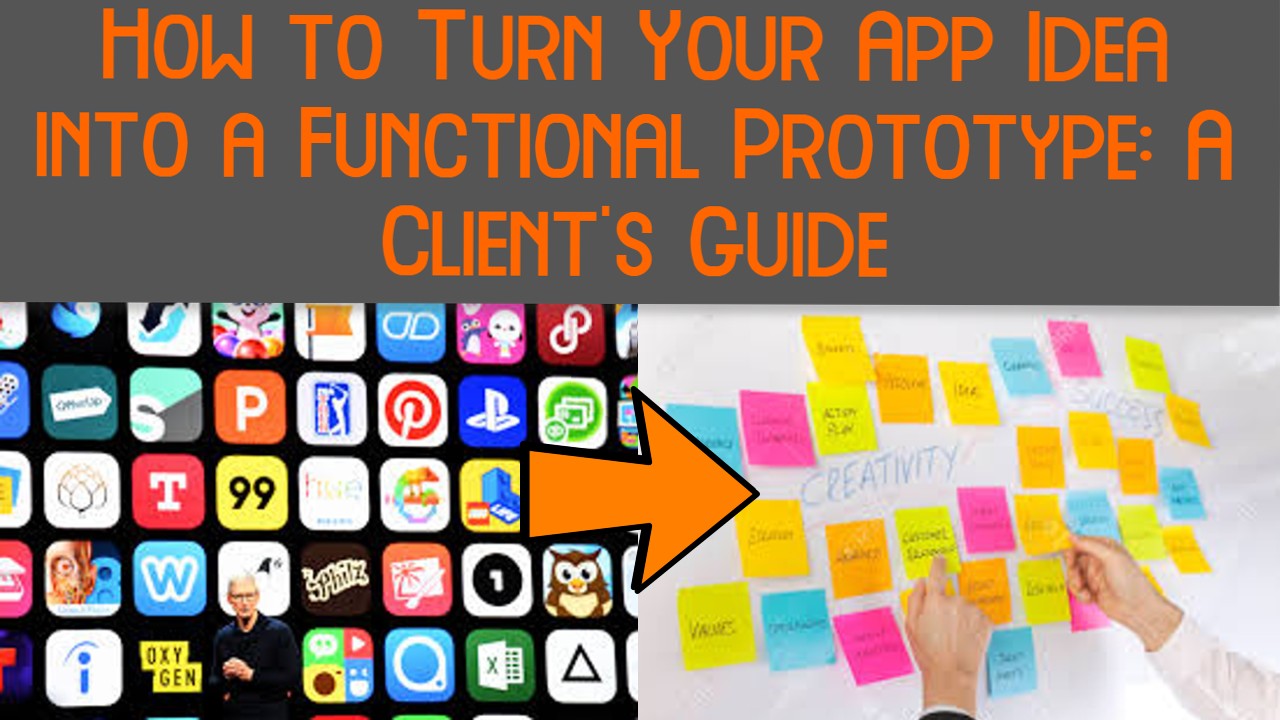
How to Turn Your App Idea into a Functional Prototype: A Client's Guide
So, you've got a brilliant app idea that you believe can change the game. Congratulations! Now comes the exciting part - turning that concept into a tangible prototype. This initial step is crucial as it allows you to test your idea's feasibility and functionality before investing significant resources. As a client, here's your detailed guide on how to navigate this process smoothly:
1. Refine Your Idea
Before jumping into development, take some time to refine your app idea. Clarify the problem it solves, identify the target audience, and envision the core features. This clarity will serve as a roadmap for your development team. Consider creating a detailed feature list, user stories, and even rough sketches to flesh out your concept.
2. Market Research
Understanding your competition and the existing market is paramount. What similar apps are out there? What do users love about them, and where do they fall short? This knowledge will help you position your app effectively. Engage with potential users through surveys or forums to gather insights into their pain points and preferences.
3. Wireframing and Mockups
Work closely with your development team to create wireframes and mockups. These are basic, visual representations of your app's layout and functionality. They act as blueprints, giving you a clear visual of how your app will look and function. Consider including annotations to explain the functionality of different elements and interactions within the app.
4. Select the Right Development Partner
Choosing the right development team is crucial. Look for a team with a track record of turning ideas into functional prototypes. They should understand your vision and be able to provide valuable input and technical expertise. Schedule regular meetings with your development team to foster effective communication and ensure everyone is aligned with the project's goals.
5. Choose the Right Tools
Discuss with your development team about the best technologies and frameworks for your app. This decision will impact the app's performance, scalability, and future updates. Consider factors like platform compatibility, database options, and third-party integrations to ensure a robust and versatile foundation for your app.
6. Iterative Development
The development process should be iterative. This means building and testing in stages. Each iteration should bring your app closer to the final product. It's an opportunity to gather feedback and make necessary adjustments. Encourage beta testing with a select group of users to uncover any usability issues and refine the user experience.
7. User Experience Testing
As the prototype takes shape, conduct user experience testing. This can be done with a select group of potential users who provide feedback on the app's usability, functionality, and overall appeal. Consider using prototyping tools that allow for interactive testing, giving users a hands-on feel of the app's functionality.
8. Refine and Polish
Based on user feedback, refine and polish your prototype. Pay attention to details like user interface design, navigation flow, and overall aesthetics. A polished prototype demonstrates professionalism and attention to user experience. Conduct A/B testing on different design elements to optimize for user engagement and satisfaction.
9. Functional Testing
Ensure all features work seamlessly. Test the app under various scenarios to identify and fix any bugs or glitches. A functional prototype should mimic the final product as closely as possible. Conduct rigorous testing on different devices and operating systems to ensure cross-platform compatibility.
10. Prepare for Scale
Consider how your app will handle a larger user base. Discuss scalability options with your development team. This foresight will save you from potential hiccups down the line. Implement cloud-based solutions and consider load testing to ensure your app can handle a surge in users without compromising performance.
